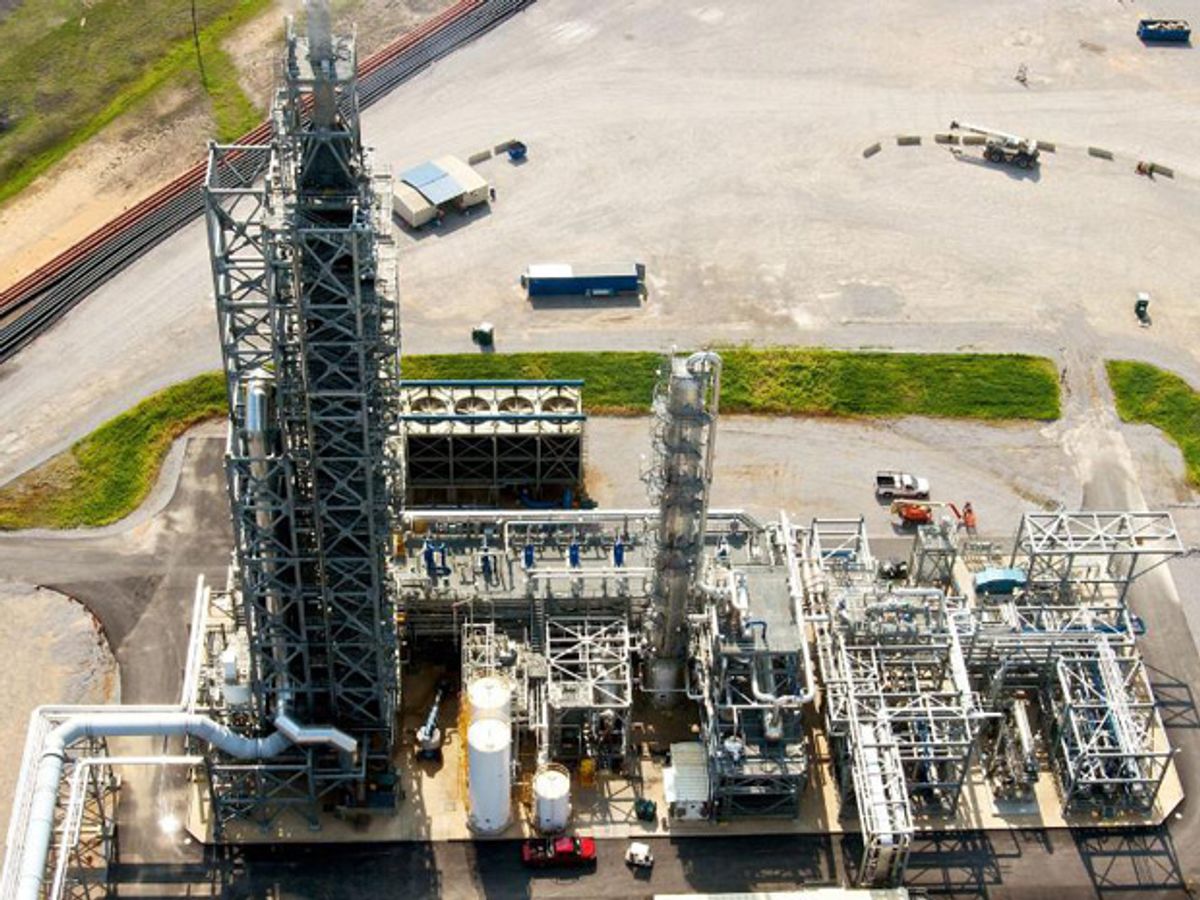Last week carbon capture proponents in the United States got two bits of good news. First, Mitsubishi Heavy Industries and Southern Company Services said they have successfully tested a technology that captures and sequesters carbon dioxide from coal plants. Later in the week, the U.S. Energy Department pledged to come up with about $US 1 billion for the $1.65-billion FutureGen 2.0 carbon capture and storage project in Illinois.
Based on the results released Tuesday, Mitsubishi Heavy says that it will accelerate its program to commercialize the technology. Southern Company owns the 2657 megawatt power plant in Alabama that the technology was tested on. The U.S. Department of Energy and the power industry’s R&D arm, the Electric Power Research Institute, also pitched in.
The demonstration project began in June 2011. The plant consists mostly of a flue-gas scrubber, flue-gas carbon capture system, as well as carbon compression machinery and electrical components. It recovers 90 percent of the carbon dioxide generated and has a capacity to catch 150 000 metric tons of carbon dioxide a year. Mitsubishi Heavy did not reveal how this system affected the plant’s efficiency or its water use.
Besides Southern Company’s work with Mitsubishi Heavy in Alabama, it also has a carbon capture project going in Kemper County, Mississippi. That one would capture the carbon dioxide and use it to enhance oil recovery. There, the Energy Department is contributing $290 million to help Southern finish the job.
FutureGen is a separate deal in Meredosia, Illinois where the carbon dioxide will be captured and stored underground. It’s also a public-private partnership in which an oil-fueled unit will be retrofitted and which the Energy Department is contributing $1.1 billion, or 80 percent of the cost. The project is in its preliminary design and engineering phase.
Carbon capture isn’t the only thing coal-fired power plants are adding. The Energy Information Administration reported in 2013 that they invested $30 billion in scrubbers between 2007 and 2011. The scrubbers, which help reduce sulfur dioxide and nitrogen oxide emissions that lead to acid rain, were installed in 110 coal units in 34 states during that time. Altogether, about 60 percent of the nation’s fleet has those scrubbers installed, it adds.
The two carbon capture deals came in the same week that the U.S. Energy Information Administration has said that carbon dioxide releases are anticipated to jump in the United States because of an uptick in coal use. While 2013 releases are still 10 percent less than they were in 2005, they rose 2 percent between 2012 and 2013. The agency said that carbon dioxide releases from power plants have fallen in four of the last six years, with 2007 being the peak.
The fluctuation is largely the result of the Great Recession, which depressed U.S. industry and diminished the consumption of energy. It is also because of a switch from coal to natural gas, which releases about half of the carbon dioxide emissions as does coal. Greater energy efficiencies have also chipped in, says the government.
With the developing world expected to use more coal, the facilitation of modern coal-burning equipment is good news. Whether it helps the coal industry in the United States, though, is another matter.



